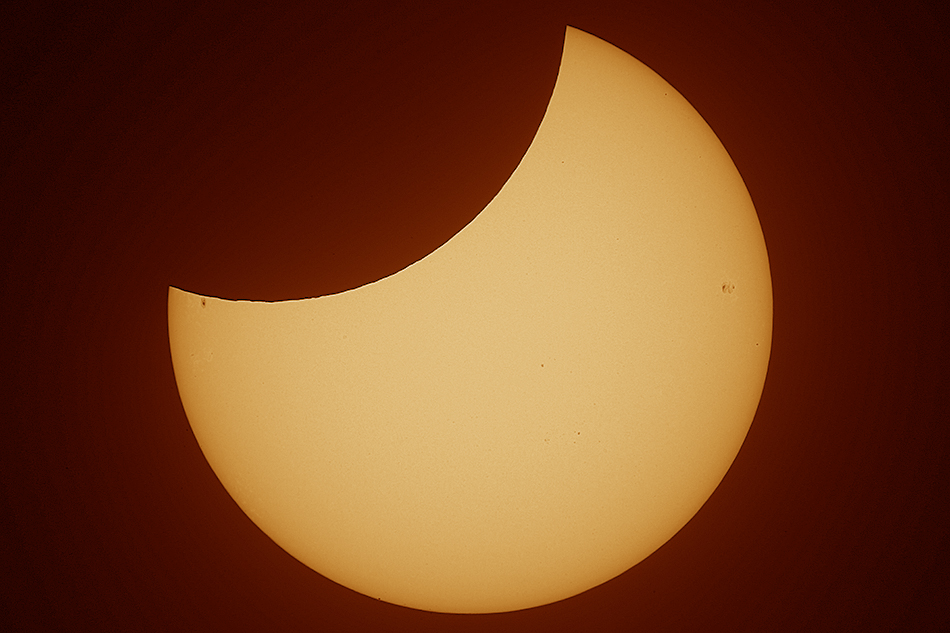
Solar eclipses have been regarded as mystical ever since man started to become aware of his environment. In spite of the
fact the diameter of the sun is 400x that of the moon, its distance from earth is also approximately 400x that of the moon
and, as a result, they exhibit a very similar apparent diameter. When these two celestial bodies are in perfect alignment
with earth by forming a straight line, we see the moon virtually cover the sun from limb to limb, leading to a darkening
of the daytime skies with totality lasting a number of minutes. Although lunar eclipses are relatively very common,
solar eclipses are not only much more dramatic thanks to totality but also very rare. With a lunar eclipse where the moon
is covered by the earth's shadow, the portion of the world in darkness at the time of the eclipse is able to see the moon
go through the various stages of eclipse. In contrast, with a solar eclipse where the moon lies between the sun and earth,
an event which occurs on average 70 times per century, the shadow cast by the moon on earth represents the path of totality
which is never more than 200 miles wide and, inevitably, covers less than 0.5% of the planet's surface and frequently traverses
open waters and very remote locations near the poles. Furthermore, since the distance of the moon from earth is variable,
there exist occasions during a solar eclipse where the moon is slightly further away from the earth ("apogee") and is not
able to fully cover the solar disk, thus leading to an eclipsed solar disk where a small ring ("annulus") around the sun's
limb is visible, thus leading to an annular solar eclipse. The observation of a solar eclipse may be considered a
once-in-a-lifetime opportunity and fully justifies the dedicated collection of eclipse chasers who trek around the globe
marvelling a solar eclipse wherever it may occur.
Note: Active region AR3131 dominates the eastern solar limb whereas active region AR3126
dominates the western solar limb with active region AR3130 being readily visible immediately due south of center.
Note: For an alternate presentation of the partial solar eclipse at maximum with the active regions
labelled, click here.
(External Contact) |
(Start of Totality) |
(Totality) |
(End of Totality) |
(Internal Contact) |
|||
|
Body: Sun Mass: 332,900 x Earth Mean Eq Diameter: 109.1 x Earth Distance: 149 million km RA / Dec: 13h 47m 52s / -11° 7' 25" Diameter: 32.14' Magnitude: -26.8 Saros Series: 124 Magnitude:
Duration: 2h 14m 57s |
 |
Date: Oct 25, 2022 13:42:56 UT+3 Location: Athens, Greece Equipment: AP 160 f/7.5 StarFire EDF AP 2x Conv Barlow AP 1200/CP3 GEM Canon EOS 6D Mk I Baader UV/IR-Cut Filter Baader ND-5 (full-aperture) Exposure: 1 x 1/200 sec ISO 100 RAW image format 5472x3648 image size Manual Mode Software: Photoshop CS5 Processing: Grayscale Unsharp Masking Levels Resampling JPG Compression |